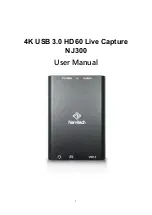
8
LRG 1x-6x - Installation & Operating Manual -
819878-00
Usage for the intended purpose
LRG 16-60/LRG 16-61/LRG 17-60 conductivity electrodes may only be used for measuring electrical
conductivity in liquid media.
LRG 1x-6x conductivity electrodes are used in combination with the URS 60/URS 61 safety control unit
as a conductivity limiter and in combination with an LRR 1-60 conductivity controller as a continuous
blowdown regulator and limit indicator in steam boiler systems and hot-water plants.
■
■
To guarantee trouble-free operation, observe the water quality requirements as specified
in the Technical Rules (TRD) and EN standards for steam boiler systems.
■
■
The equipment may only be used within the admissible pressure and temperature limits; see
“Technical data” on page 18 and “Rating plate/Identification” on page 21.
■
■
Visualisation and operation take place via an operating unit of type URB 60 or SPECTOR
control.
Applicable directives and standards
LRG 16-60/LRG 16-61/LRG 17-60 conductivity electrodes have been tested and approved for use in the
area governed by the following directives and standards:
Directives:
■
■
Directive 2014/68/EU
EU Pressure Equipment Directive
■
■
Directive 2014/35/EU
Low Voltage Directive
■
■
Directive 2014/30/EU
EMC Directive
■
■
Directive 2011/65/EU
RoHS II Directive
Standards:
■
■
EN 12953-09
Shell boilers, requirements for limiting devices
■
■
EN 12952-11
Water-tube boilers, requirements for limiting devices
■
■
EN 60730-1
Automatic electrical controls – Part 1:
General requirements
■
■
EN 61508
Functional safety of electronic systems
Standards documents:
■
■
VdTÜV Bulletin BP WAUE 0100-RL
Requirements for the testing of water monitoring equipment
Technical rules for steam boilers - as a knowledge base:
This Manual occasionally refers to the TRD regulations as a knowledge base.
These regulations have not been in force since 1 March 2019 and are no longer updated.
They are replaced by the TRBS (German Technical Rules for Industrial Health & Safety).
Always observe the current regulations (EU directives, EN standards, information from emplo-
yers’ liability insurance associations, etc.) in order to comply with the current state of the art.









































